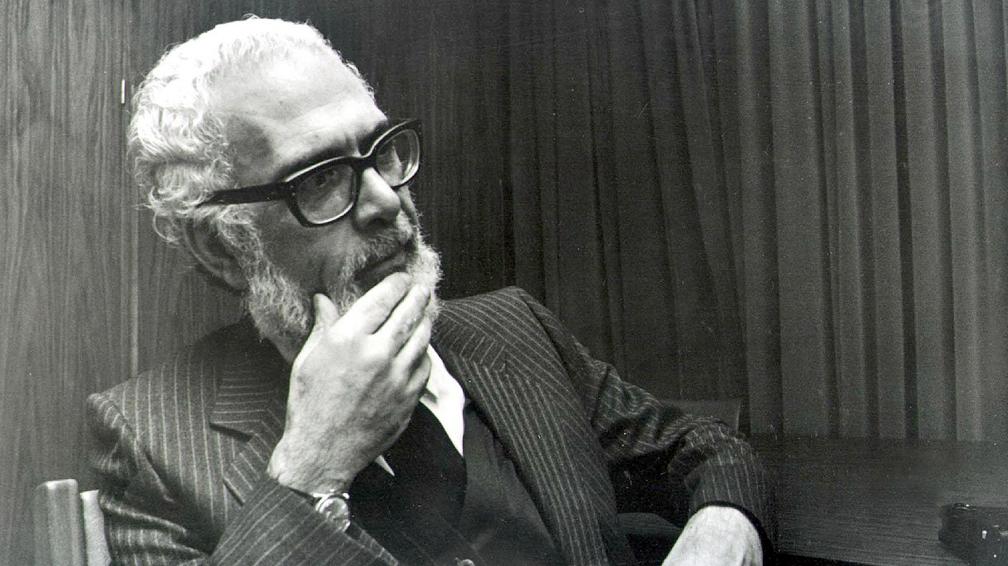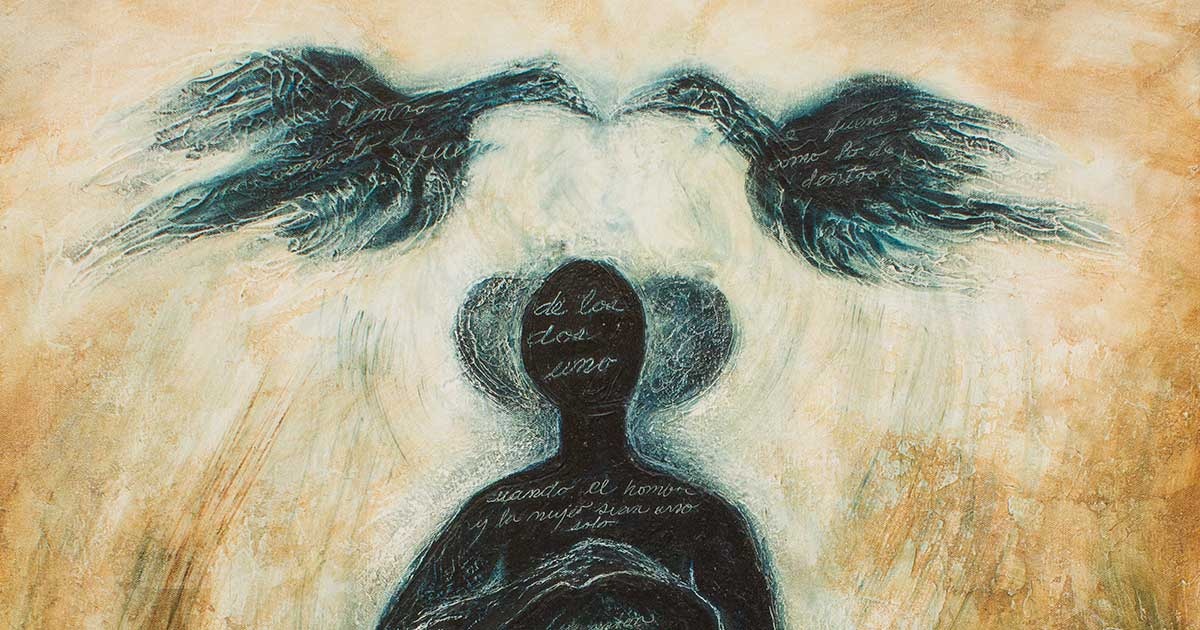By Carmen Chang,
It is a tale that belongs to the genre called fantasy. The universe of fiction is presented as bewildering and ambiguous. This ambiguity is very recurrent in the fantasy genre: it is not known whether the unexplained has really happened or whether it has been the fruit of our imagination. The reader of the text lacks a form of authentication to understand this rupture of logic and reason and can only make hypotheses. It is essential in the fantastic, as happens in this story, the impossibility of revealing the mystery. It is essential to comment on the recurrent ontological dimension of fantastic stories, since, in most cases, these are not reduced to the strangeness that arises from reading the text, but allow us to access a new reality, to an unknown place where nothing can be taken for granted and which forces us to reflect on a new semantic dimension of the text much deeper than can be understood at first glance. The impossible worlds of the fantastic are ontologically as valid as those that develop in a real space, and sometimes they can even point out the unspeakable and lead us to a reflection and knowledge superior to those that we could hardly reach through other genres such as the realistic. The allegorical dimension, or epistemological metaphor, is very common in the fantastic. It opposes realism because the world before us is governed by a system of laws and principles different from that shared by most human beings.
The structure of the fantastic overflows because the narrative world of Di Benedetto presents a dichotomous opposition between the simple real and the imaginary, the onirisme and the delirium. Two parts are clearly perceived in this tale: in the first the animal is described, with coherent and increasingly illogical explanations; in the second part the true nature of the animal is questioned, a brief dialogue between the protagonist and his lover. He concludes with his doubt about the perception that human beings have of reality. Therefore, this story is related to the fable, since at the end of the story, a teaching or moral is presented that allows us to reflect on our own reality and our conception of it. Its title “We fly” could be related to the flying animal that is opposed to the volatile aspect of the human being: changeable and fickle.
The author uses the fantasy genre to talk about something quite complex. At first, he questions us about the nature of the feline, canine or bird. Then that leads us to question the human being. Like Poe, he establishes as an essential feature of a story the final climax as a result of the ascending line that starts from the beginning to reach the climax: the surprise outcome. The metaphor of the animal leads us to a deeper final reflection: we do not know the identity of the animal, nor do we know who we are around or who they know well.
The fairy tale usually wants to investigate the mysteries of humanity. Its main theme is based on a deep reflection about man and his notion of appearance or reality. The protagonist of the story wonders why we are surprised that this animal is a thing that really is not: “I think she supposes that I should marvel…can be dog… can be cat or dog can be a bird or any other animal that flies.” It is this supernatural element that leads us to a higher reflection on the human being. It speaks of the perception of reality that each one has. He says the human world is cynical because people don’t appear to be who they really are. He confesses that his wife does not know who he really is she does not even know that he is unfaithful to him.
The narrative voice predominates in first person, very recurrent in the fantasy genre since accessing the story from the vision of the protagonist may give greater credibility to the story, but in this case the narrator is unreliable because he doubts and changes his mind, and we can infer that it is deceiving us, we feel uncertainty and we imagine that there is something else behind it: a double meaning. As readers, when we read something, we assume that we are told the truth, but in this case, we are immersed in a strange world that disturbs us and poses a conflict due to the hesitations of the narrator. The main character is ambiguous : we know little about him. What he tells us are his reflections and inner thoughts. It is as if we were inside his head: we perceive his incoherent, illogical and disorderly reasoning. The characteristic characteristic of the nature of thought is disorder. This relates to the ambiguous nature of the fantasy genre that we have talked about before.

Similarly, in fantastic stories, the narrator usually uses the first person “I”. This brings us closer to the character, but in this case, we cannot trust him because his speech presents ambiguities and contradictions: “There is not even the question of whether it is a dog or a cat, because neither fly, and this little animal flies; for a few days it has been flying.”. At the beginning, the character provides a series of facts that try to give greater credibility to the story. Then other clues are presented as discordant: “it is cat and it likes the water”, “As when emitting the voice out of tune… is hoarse, you can’t tell if you meow or bark.” This could be perceived as logical or normal in principle. At first you don’t see anything strange, but then we begin to suspect. The natural contrasts with the fantastic element of the story. The supernatural element does not appear until the middle of the story. At first it seems like an anecdote and gradually the signs appear as rare and illogical. The fantastic is not opposed to plausibility, on the contrary, it is thanks to the plausibility that the supernatural explanation is considered as possible.
As Todorov explains, fantasy genre has certain genuine properties. Some of them that can be observed in the text are certain lexicon, which has already been mentioned above or the use of the conditional “I could marvel, of course”. Likewise, the exaggeration present in the text also leads us to the supernatural, as can be observed in the following example: “I can marvel because the cat-dog flies”.
Fantastic stories try to give credibility with a common character in a space, situation or everyday environment. In this case, there is a general uncertainty: there is no clear specification of space or time. The fact that we do not specify these questions, means that we do not disperse with other data and that we focus exclusively on the main reflection of the story.
In the story that concerns us we are presented with a confrontation to reason: we cannot give a rational explanation to what is narrated in the story. It highlights the supernatural that, in this case, does not cause terror, but it is precisely this lack of logic that makes us look for a semantic of higher order in the text.
This tale uses other resources that reinforce its fantastic nature. First, we could highlight some words, such as the noun “mystery” and the verb “marvel”, which evoke and reinforce the contrast between the natural and the supernatural. Secondly, the fable, the parable, the fantastic, the metaphorical and the allegorical characteristic of this story have the function of disturbing the reader by presenting him with a strange world that supposes a confrontation with his logic. In this case, the symbolisms, the confusing sequences and the open ending led the reader to a situation of uncertainty before what is narrated. The imagination present in this tale influences our perception of reality by presenting us with an atmosphere and a strange, confused and unknown phenomenon that exceeds the dimensions of our rational and coherent world.
References
- tonio di Beneddeto, Volamos, El Broli Argentino,2006. Available here
- Tzvetan Tódorov, Introducción a la literatura fantástica, 1981. Available here




